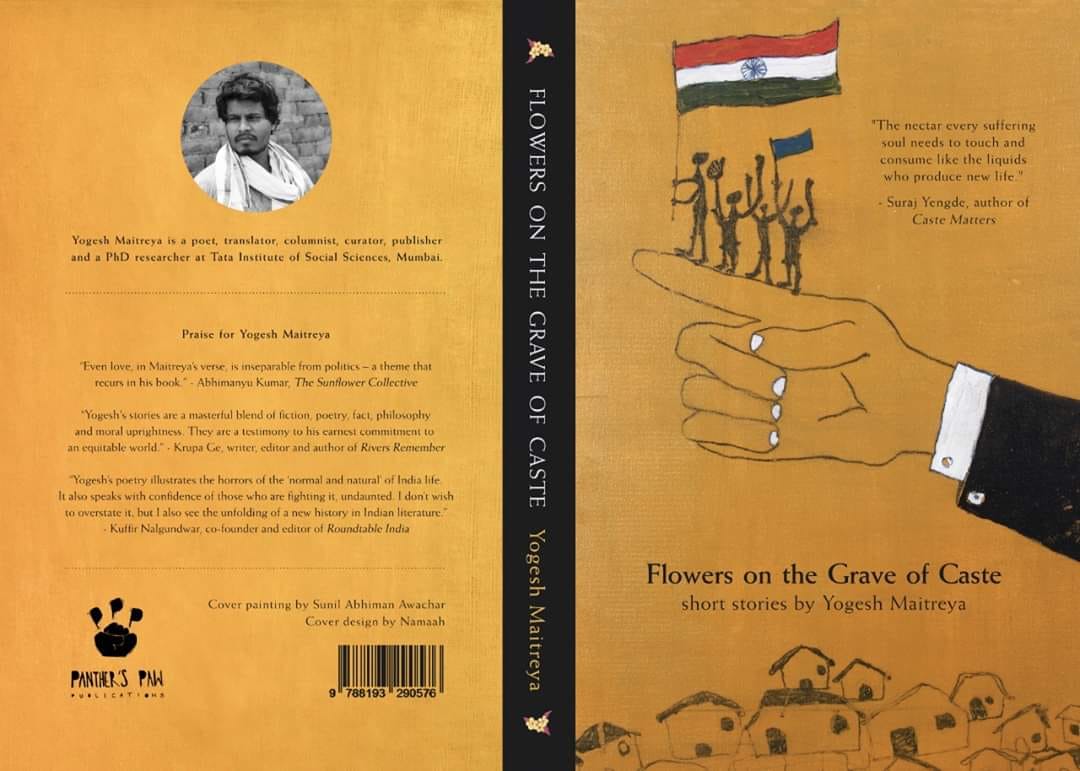By Dipankar Kamble for TwoCircles.net
Author- Yogesh Maitreya
Publisher- Panther’s Paw Publications
Cost- Rs 299
ISBN- 9788193290576
Yogesh Maitreya’s stories are not stories which we read in mainstream books. They showcase the life of Dalits across the country, especially Maharashtra. From the outset, it is clear that Maitreya has not tried to construct stories which the readers are used to reading, rather, through his stories he has tried to bring to attention the reality of Indian caste system.
One problem with fiction writing in India is that often, the problems of the oppressed and marginal people cannot find their place in these stories. Which is why Maitreya’s stories are a welcome change: people can relate to these stories. Also, by writing in English, he has allowed the privileged class and caste to know how it is to be born in a marginalised caste and class.
In Re-evolution, Maitreya successfully conveys that revolution for the lower caste starts by learning alphabets and education (the life message of Dr. Ambedkar). Also in this story, he has given courage to the character of Baliraja to fight back against injustice.
Maitreya in his story Flower on the Grave of Caste tells the reader that a human has no class and caste in real, that such labels are the work of humans.
In the story Caste, Maitreya through his narrating character confronts the privileged class. When he takes Gargi to the house of Sumedh Sapkal the poet, when Gargi begins to grow uncomfortable with the noise, the mosquitos, the smell and asks “How do people live here?” the narrating character replies, “Not by choice, obviously. In your comfort, lies the history of their discomfort.” In this story, Maitreya in a subtle manner exposes the hypocrisy of the Left which on one hand talks of revolution and socialisation of the country, Marx and others, and on the other hand are averse to eating food prepared by a lower caste or in the communist’s term a “Labour Class”.
In Life is Beautiful, Maitreya smashes the traditional argument of “Merit” given by the Savarnas. He then brings in light how poor people are not allowed to dream in this country because of the rigid and airtight box of caste and not “Class”.
Maitreya’s story EDUCATE, ORGANISE, AGITATE is the longest story in the book. In this story, he prepares a plot like mainstream writers do in Bollywood movies; the protagonist reaches Mumbai and all of a sudden his life changes and he becomes an influential character. But Maitreya is no ordinary writer: he has given it an entirely different turn to the story after his protagonist reaches Mumbai. He has exposed how the legal machinery fails to give justice: he exposes how legal machinery is not accessible for the poor. He has also brought in light the environment of central universities and also the corrupt educated minds of students studying in it. He then introduces a strong character of Ashoka and conveys the Ambedkarite formula of liberation “EDUCATE, ORGANISE, AGITATE”.
This book will surely give a feeling of belongingness to Dalits of India. Through his work, Maitreya tells us stories that the privileged castes have purposefully chosen to ignore for centuries and continue to do so even now. This book, hopefully, will make them pay attention to the condition of their fellow citizens.
The author is a student at the National Law University, Nagpur.


